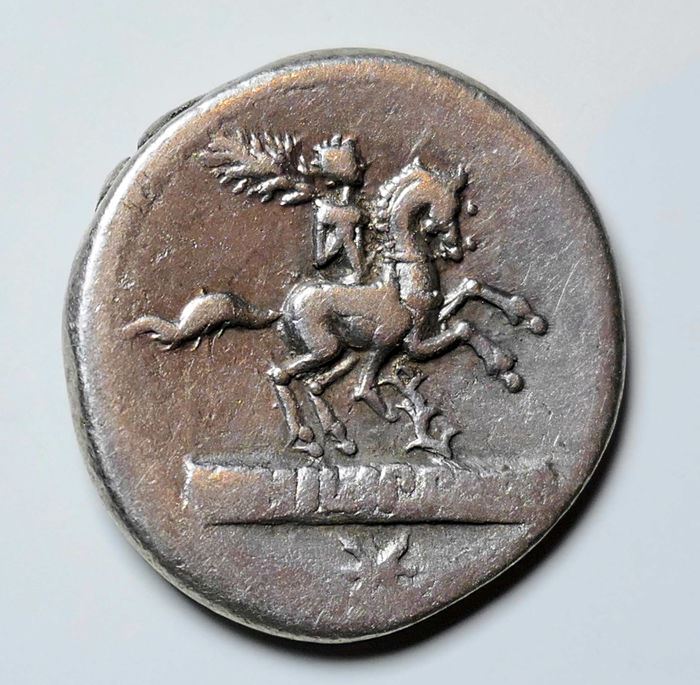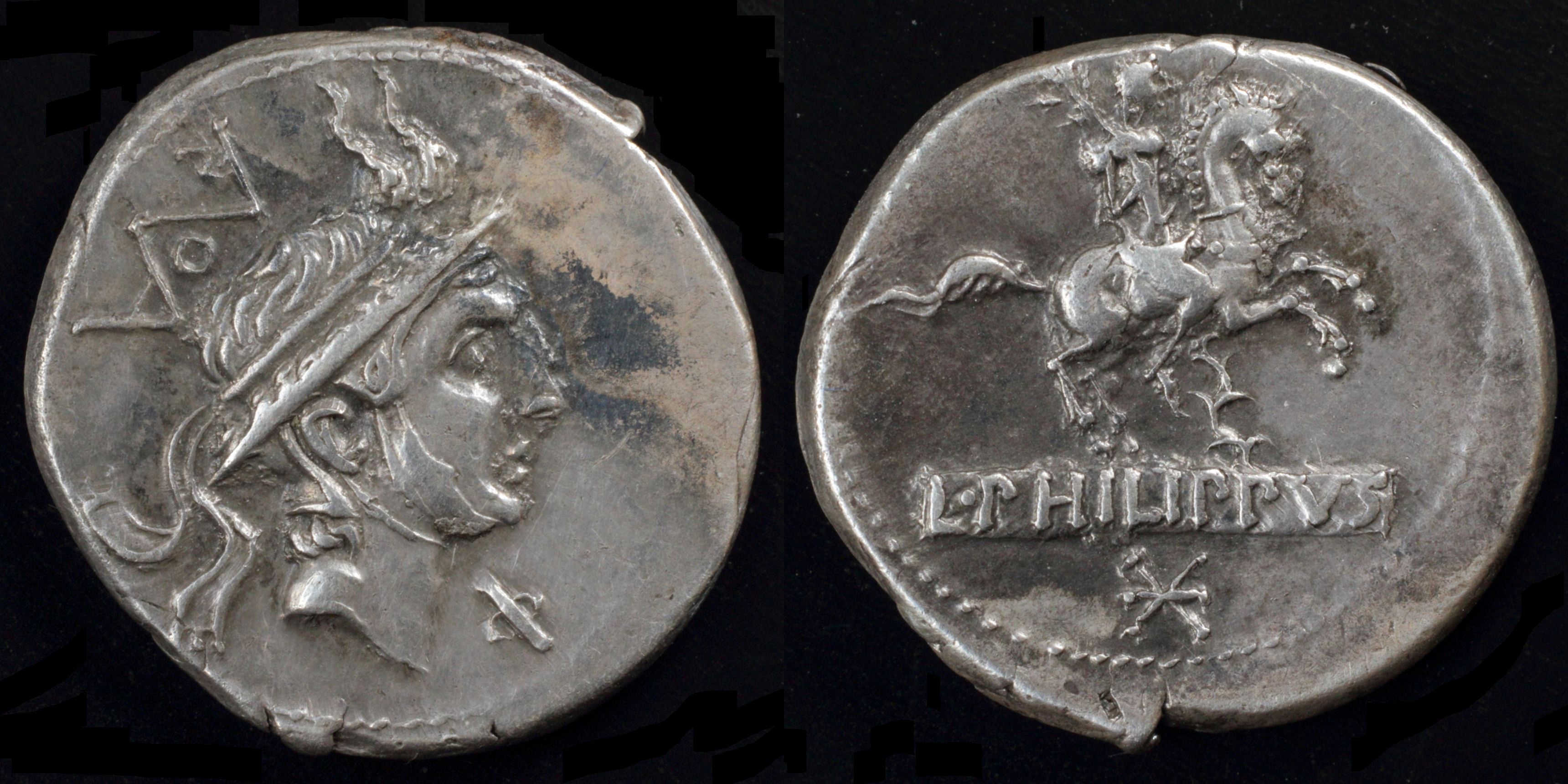Lucius Marcius Philippus was one of the moneyers for the year 113-112 BC, a Roman orator, and one of the most important politicians of the late Roman Republic.
As Consul in 91 BC, he strongly opposed Drusus' reforms - which was instrumental to the outbreak of the disastrous bellum Italicum, the Social War.
Personalitywise, he seems to have been more of an individualist and survivor than committed to any cause, and took advantage of the political amnesty offered by Sulla in 83 BCE to change sides, along with other Marians of later importance
As Consul in 91 BC, he strongly opposed Drusus' reforms - which was instrumental to the outbreak of the disastrous bellum Italicum, the Social War.
Personalitywise, he seems to have been more of an individualist and survivor than committed to any cause, and took advantage of the political amnesty offered by Sulla in 83 BCE to change sides, along with other Marians of later importance


Obverse: helmet, diademed bust of Philip V king of Macedon right with goat's horns (ROMA) Φ
Reverse: equestrian statue right, holding laurel branch, flower below L·PHILIPPVS (XVI)
Diameter:
18 mm
Die Orientation: -
Weight: 3.9 g
Die Orientation: -
Weight: 3.9 g
Reverse shows equestrian statue of L. Marcius Q. f. Philippus who had concluded a peace treaty with Philip V of Maced in 197 BC.
Moneyer was good speaker and important politician. He was tribune 104 BC, consul 91 BC. He was against granting of citizenship to Roman allies what led to Civil war.
"... A final intriguing element on the coinage of the Philippi which unites it across half a century and the shift in emphasis from Makedonian to Roman royalty, is the flower which appears in the same place on the reverses of RRC 293 and 425 (beneath the hooves of the horseman and the equestrian statue of Q. Marcius Rex). Crawford (RRC, 308) calls attention to the Roman tradition about the conception of Mars (legendary ancestor of clan Marcia) when Juno was fertilised by a flower. But to accomodate the distinctively Makedonian theme of RRC 293, it might be preferable to see it as a lily and already understood as a generic symbol of royal blood. This notion seems to originate with the shift of the Achaemenid seat of government from Persepolis to Susa (literally, the city or place of the lily), and this flower is found on both Hasmonaean and Seleukid royal coinage in Hellenistic times before eventually finding its way into the Merovingian and eventually the Capetian regalia. ..." Mark K.P. from McCabe's sites.
Crawford 293/1, SRCV I 170, Sydenham 551, RSC I Marcia 12
